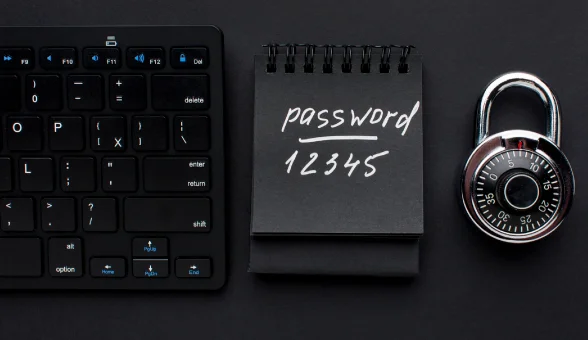Fraud cases are reaching all-time highs among the American public. IC3, or the FBI’s Internet Crime Complaint Center, reported overall losses of over $12.5 billion for 2024, a considerable increase, primarily attributed to wire-transfer-related scams, business email compromise, and phishing scams. Meanwhile, cases of mail-related fraud are once again on the increase, led on all fronts by identity theft, forged checks, and fraudulent correspondence posing as legitimate ones.
Mail and wire fraud, although appearing to be representatives of different eras, one based on cyberspace and the other on older techniques, employ a common strategy at their core: deceiving people into providing financial support or personal information through established channels. Their risk is enhanced through the legitimacy they reflect. A mistaken click or misplaced envelope can have permanently disabling financial consequences.
Understanding the workings of mail fraud and wire fraud, how they differ, and the relevant warning signs to look out for, is not just a good idea; it is crucial. In some cases, such as property deals, investments online, or letters that purport to be from governmental organizations, having a good grasp of what legitimacy looks like can make a tremendous difference between staying protected and avoiding financial losses in the thousands.
The manual endeavors to clarify the meanings of wire and mail fraud, explore their modus operandi, dissect relevant real-world cases, and suggest implementation strategies for avoiding them and for reporting them during the year 2025.
What is Wire Fraud?
The wire fraud crime at 18 U.S.C. § 1343 provides that using electronic communications such as emails, texts, call phones, or online communications, a person defrauds another of money or property.
The essentials are:
| Elements | Meaning |
| Intent | Knowledge is used to defraud for individual gain |
| Scheme | Organizational scheme for fraud |
| Electronic Use | Electronic mail, telephone, or electronic messages are used to carry out the scam |
| Result | Money or property is stolen or victimized |
Common Examples of Wire Fraud
- Business Email Compromise (BEC): Trickery by impersonating executives to intercept payments.
- Real Estate Scams: Misleading wiring directions in real estate closings.
- Investment/Crypto Fraud: Sincere promises of high returns on fake platforms.
- Overpayment Scams: Refunds are asked for after making false deposits.
Wire fraud is perilous because wire transfers are typically unrecoverable. BEC and other wire fraud resulted in over $3 billion in losses during 2024 alone, showing the rate at which online scams can snowball.
What Is Mail Fraud?
Mail fraud is a federal crime under 18 U.S.C. § 1341, which involves the use of postal or courier services (USPS, FedEx, UPS) to carry out a scheme to defraud a person of money or property. For a detailed look at common social engineering tactics, check out our detailed guide.
| Elements | Meaning |
| Intent | Knowingly trying to deceive for personal gain |
| Scheme | A structured plan or a fake pretense |
| Use of Mail | Sending or receiving letters, packages, or documents |
| Result | Loss of money or property |
Common Examples of Mail Fraud
- Lottery and Sweepstakes Scams: Fee payment to obtain non-existent prizes.
- IRS or Government Letters: Threats or fictitious tax notices.
- Charity Donation Scams: Phony pleas for disaster or medical help.
- Identity Theft by Mail: Swiping checks or identification materials.
- Subscription Scams: Phony renewal notices for magazines or services.
Mail fraud works because individuals have more trust in letters than in emails, making it simpler for criminals to take advantage. In 2024, check washing and mail theft resulted in millions lost, as reported by USPS statistics.
Wire Fraud vs Mail Fraud: Key Differences
Mail and wire fraud share the same goal of defrauding victims to gain money, but the major difference lies in the method: electronic or physical. Both are federal crimes with severe penalties.

| Aspects | Wire Fraud | Mail Fraud |
| Method | Email, texts, phone calls, online websites | USPS, FedEx, UPS, delivery services |
| Examples | BEC, real estate scams, crypto scams, invoice scams | Lottery scams, IRS notices, charity scams, and identity theft |
| Detection | Difficult to trace due to instant transfers | Easier to trace using delivery records |
| Penalty | Up to 20 years in prison; 30 for bank/federal cases | Up to 20 years; 30 for bank/federal cases |
| Preferred by Criminals | Quick, irreversible electronic transfers | Takes advantage of trust in official-looking mail |
Overlap between Wire Fraud and Mail Fraud: <h3>
- Both involve intent to defraud.
- Both can be charged together if the scheme involves email and mail.
- Both are federal felonies with long-term legal implications.
Common Misconceptions About Wire and Mail Fraud
The majority of people think that wire and mail fraud target banks or involve enormous amounts. The reality is, anybody can be caught out.
Most Common Myths
- They target only companies: Retirees, individuals, and small business owners are frequent victims.
- Wire fraud involves only large sums: Scammers can start with small sums to avoid raising suspicion.
- Mail fraud is something of the past: Mail still conveys trust, which makes letters a good channel for scams.
- Money is easy to recover: Wire transfers and mailed checks are often impossible to reverse after dispatch.
- Fraud is obvious: Modern scams utilize professional-sounding e-mails, logos, and official-looking letters.
Knowledge of these myths keeps people and businesses vigilant and keeps them from becoming victims. For more insights into cybercriminal profiles and how they operate, see this overview.
Real-Life Wire Fraud Examples
The wire fraud involves convincing victims to send funds electronically. Timeless illustrations involve:
- Business Email Compromise (BEC): Spoofers impersonate executives or suppliers to redirect payments. BEC accounted for over $3.5 billion in losses within the United States in 2024.
- Real Estate Scams: Spoofers intercept down payments by manipulating wiring instructions during property closings.
- Cryptocurrency Scams: Phony trading platforms persuade the investor into transferring funds online, resulting in a $1.9-billion financial loss from cryptocurrency scams during 2024.
- Overpayment Scams: Spoofers request a refund after they send a phony payment.
- Romance Scams: Scammers emotionally manipulate victims to send money by wire.
The wire fraud depends on urgency and trust, so quick transfers are hard to reverse. Awareness and verification are prime protection devices.
Real-Life Mail Fraud Examples
Mail scams for fraud utilize reputable mailing services such as USPS, FedEx, or UPS to gull individuals into sending money or disclosing sensitive information.
- Lottery & Sweepstakes Scams: Individuals are called claiming they won a prize, but must pay taxes or fees first.
- Government or IRS Letters: Phony letters resembling official letters from scammers threaten legal action or unpaid taxes.
- Charity and donation scams refer to fraudulent organizations that solicit donations after natural catastrophes or medical emergencies.
- Mail-Related Identity Theft: Identity thieves steal envelopes containing checks, credit cards, or personal documents.
- Subscription or Renewal Scams: Spurious notices mislead people into renewing nonexistent services.
In 2024, the USPS experienced a sudden spike in check fraud and mail theft that cost tens of millions. Notwithstanding the trend for online directions, physical mail continues to prove a successful platform for crooks due to the fact that humans have a bias towards trusting what is in print.
Below is a screenshot-style fictional government letter and phishing email, shown to highlight common signs of scams.

Wire & Mail Fraud: 2025 Trends and Stats
Wire and mail fraud continue to rise, with electronic scams driving the most recent losses.
2024 Key Statistics
- $16.6 billion cyber-enabled fraud was taken in the U.S., 33% increase from 2023.
- 83% of losses included electronic methods like BEC, crypto scams, or investment schemes.
- BEC alone costs $2.77 billion.
- Cryptocurrency scams accounted for $9.3 billion, including fake exchanges and investments.
- Individuals aged 60 and older were disproportionately affected and lost nearly $4.9 billion.
Trends
- Con artists use speed and anonymity of electronic transfers to commit wire fraud.
- Mail fraud continues to occur, particularly with check fraud and identity theft, but is less reported than with wire fraud.
- Coordinated law enforcement efforts led to 215 arrests in 2024 targeting multi-national schemes.
These figures reiterate the need for awareness and verification on the part of businesses and individuals to prevent losses.
How to Detect Wire and Mail Fraud: Major Warning Signs
Red flag identification beforehand can prevent huge losses. Wire and mail fraud are both premised on urgency, deception, and trust.
Warning Signs: <h3>
- Urgent Requests: Urgency to perform something right now, like “transfer funds now.”
- Suspicious Wiring Instructions: Unusual changes in account or recipient information.
- Unfamiliar Sender Information: Very similar email addresses or phony logos on mail.
- Asking for Sensitive Information: Reputable organizations never ask for passwords or account numbers via mail or email.
- Unconventional Payment Methods: Scammers like wire transfers, gift cards, or virtual currency.
- Too-Good-to-Be-True Offerings: Unexpected lottery wins, guaranteed investment returns, or rewards.
- Grammar & Page Faults: Spelling mistakes, strange words, or misplaced logos in email or mail.
- No Verification Choices: No proper phone number or address for validation.
Early detection and confirmation will prevent escalation and harassment. Learn more about identifying and handling threats in our guide on cyberstalking. Always use caution, halt, and authenticate before sending money or personal information.
Legal Penalties and Consequences of Wire and Mail Fraud
U.S. federal mail and wire fraud are felonies with strict legal penalties.
Wire Fraud
- Prison: Up to 20 years; up to 30 years when the federal program or financial institution is involved.
- Penalties: Felony sentences to $250,000 or higher per indictment.
- Additional: Victim restitution and permanent federal felony conviction history.
Mail Fraud
- Prison: Up to 20 years; up to 30 years for bank or federal-related cases.
- Fines: Same as wire fraud, significant per offense.
- Additional: Restitution and permanent criminal record.
Key Notes
- Several counts can increase overall prison time and fines.
- Intent to defraud needs to be established for criminal liability.
- Gross negligence will impose civil liability on companies.
Knowledge of penalties emphasizes prevention, verification, and timely reporting to avoid extreme results.
How to Protect Yourself & Avoid Fraud?
Preventing wire and mail fraud is a matter of awareness and common-sense measures on a daily basis by consumers and businesses.
Key Prevention Steps: <h3>
- Verify Payments: Ensure wiring details from reputable sources.
- Use Multi-Factor Authentication: Protect emails, banking, and financial accounts with MFA.
- Protect Documents and Mail: Shred confidential documents, use secure mailboxes, and retrieve mail promptly.
- Train Employees: Educate employees to recognize red flags in BEC and vendor schemes.
- Check Accounts Periodically: Review statements and report suspicious activity promptly.
- Investigate Investments & Charities: Verify legitimacy via official websites prior to sending money.
- Use Secure Means of Communication: Send sensitive data through encrypted email or safe portals.
Periodically following these steps significantly reduces the risk of being a victim of wire or mail fraud. Knowledge and verification are the greatest defenses.
Reporting and Recovery Steps for Wire & Mail Fraud
If you are the victim of wire or mail fraud, it is necessary that you move promptly. The sooner the report is made, the more chances there are that lost money will be recovered and other criminal acts will be prevented.
1. Immediate Actions
- Notify your bank or financial institution at once. Ask accounts to be frozen or transactions to be reversed, if possible.
- Document everything: Take copies of letters, emails, receipts, and account statements. Detailed documentation makes it easier to report and recover.
2. Inform Federal Authorities
- FBI Internet Crime Complaint Center (IC3): Submit complaints for wire fraud or BEC-related scams.
- U.S. Postal Inspection Service (USPIS): Report mail fraud cases, such as identity theft or counterfeit checks.
- Local police: Federal authorities cover most cases of fraud, but reporting to the police adds another level of documentation.
3. Recovering Funds
- Recovery is challenging but possible if an immediate action is initiated.
- Some banks will reverse wire transfers if notified in good time.
- For mail fraud, calling the USPS and the bank is important to prevent further loss.
4. Professional Recovery Assistance
- Consult professional internet scam recovery services to handle the recovery of wire and mail fraud losses.
- They work by monitoring transactions, coordinating with banks, and guiding victims through federal reporting procedures.
- Professional help can be a big improvement for recovery, especially in complex or cross-border cons.
5. Follow Up
- Monitor the accounts closely after submitting.
- Change passwords, alter security questions, and keep watch for follow-up scam attempts.
- Keep reporting agencies informed of case status.
These steps must be done immediately after an attempt at fraud. The promptness of these actions not only increases the chance of recovering stolen money but also allows law enforcement to identify and prosecute the criminals involved.
Protecting Yourself from Wire and Mail Fraud: Key Takeaways
Mail and wire fraud are serious threats, but being aware can prevent losses. Both involve deception and timelines, but one by electronic transmissions and the other by postal mail.
Key Takeaways:
- Act quickly: Acting promptly ensures the highest chances of preventing losses.
- Verify everything: Verify wiring instructions, sender details, and suspicious requests.
- Recognize red flags: Urgency, foreign payment methods, and impersonation are common tactics.
- Secure mail and accounts: Use multi-factor authentication, secure mailbox, and safe document handling.
- Report immediately: Inform banks, federal authorities like IC3 or USPS, and professional recovery firms.
Being aware of these distinctions and taking preventive steps makes individuals and businesses ready to thwart fraud and recover quickly if attacked.Call Capx Recovery today for expert prevention and recovery support.
FAQs About Wire and Mail Fraud
Can a bank reverse a wire fraud transaction?
Banks can sometimes reverse a wire transfer if contacted immediately, especially if the transfer hasn’t been completed or credited to the recipient’s account. Once the funds are fully processed, recovery becomes extremely difficult.
How long do I have to report wire fraud?
While there’s no strict federal deadline for reporting, acting as soon as possible increases the chances of stopping further losses and recovering funds. Early reporting also helps law enforcement trace the criminals more effectively.
What is wire fraud conspiracy and sentencing?
A wire fraud conspiracy involves two or more people agreeing to commit wire fraud. Sentencing can include up to 20 years in prison, hefty fines, and mandatory restitution, with longer sentences if a financial institution or federal disaster is involved.
Can you go to prison for wire or mail fraud?
Yes, both wire and mail fraud are federal felonies. Convictions can result in up to 20 years in prison, fines, and restitution, with enhanced sentences for cases involving banks, federal programs, or large-scale losses.



